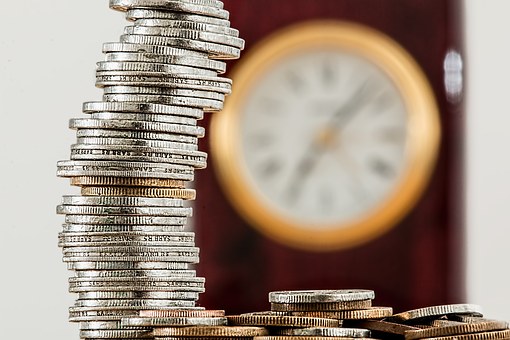
Commercial Awareness Update – W/C 24th August 2020
August 25, 2020
The ‘Success’ of Boohoo
August 26, 2020Joe Zietman analyses the possible shapes of the UK’s economic recovery.
These are unprecedented times, or so the now clichéd phrase goes. Unfortunately, there is more than a grain of truth in it, no more so than when discussing our economic predicament. The UK is now facing its highest peacetime budget deficit, the Bank of England is refusing to take negative interest rates off the table, and the British taxpayer will even contribute to a midweek curry out.
As the UK tips into recession and economists speculate on the shape of the economic recovery, it is worth reflecting on what makes this slump unique. For this recession is indeed self-inflicted. Leaving aside whether the lockdown was necessary (most think it was), the fact this recession has effectively been produced by government mandate is the truly ‘unprecedented’ feature of this crisis. Indeed, this is not a banking crisis (the major banks are rather well capitalised after the last crisis), nor is it entirely the result of events out of our control. So, the logic would suggest that as the UK loosens its lockdown, we can expect a sharp bounce back in our economic fortunes. This is the logic behind the oft-repeated ‘V’ shaped recovery.
The latest figures have shown that in Q2, the economy shrank by 20.4%, compared with Q1, this being the worst recession since records began. Whilst this makes for sobering reading, it is clearly not all doom and gloom. The figures have shown that the recovery is already underway, with output growing by 8.7% in June.
The ‘V’ is one of many possible outcomes in this alphabet soup, and it is the Bank of England which tentatively subscribes to this logic. Indeed, the Bank’s Monetary Policy Committee has now revised its latest economic forecast, suggesting that by the close of play in 2020, GDP will have fallen 9.5% over the year, compared with its figure of 14% back in May. The Bank is basing this outlook on more robust consumer spending than expected, supported by fiscal measures, most notably Mr Sunak’s ‘Eat Out to Help Out’ scheme.
Unfortunately, it seems overly optimistic to describe the start of our recovery as anything like a ‘V’. Whilst some of the lost ground has been recovered, output is still far below trend levels, and the government’s furlough scheme is only concealing the reality facing the jobs market. The very notion of a ‘V’ recovery would suggest that output would rise as quickly as it has fallen, and patently this has not happened.
The natural counter to our ‘V’ is a ‘U’ shaped recovery. Unsurprisingly, this sort of recovery would see the UK returning to trend growth much more slowly than in any ‘V’ scenario. The argument for this has been illustrated by the EY ITEM Club’s most recent report, which suggested that UK economic output will not return to its 2019 level until the end of 2024. Howard Archer, Chief Economist at the EY ITEM Club, puts this down to lower than expected consumer confidence stating that “even though lockdown restrictions are easing, consumer caution has been much more pronounced than expected”. Mr Archer is simply pointing out that until consumers can engage with the economy without fear of contracting COVID-19, it cannot be assumed that their spending habits will return to ways of old.
There is also talk of a ‘W’, in which, absent of a vaccine, a further lockdown later in the year could plunge the UK back into recession. This is of course, entirely dependent on whether the relaxation of the lockdown measures leads to a spike in transmission and frankly, this is anyone’s guess.
Another contender is the ‘L’, undoubtedly the least desirable of all the outcomes. This sees the UK returning to growth but at a lower absolute level of output. This accords with The Economist’s notion of the ‘90% economy’ in which the country adjusts to a new way of life, with some areas of the economy such as hospitality and leisure never quite being able to operate in the same manner ever again.
Perhaps the most interesting alphabetical illustration is that of the ‘K’. This demonstrates the distributional skew in the data, a point highlighted by Howard Davies, chairman of NatWest Group. That is, as the UK recovers, we can find an ever-increasing gap between the ‘haves’ and the ‘have-nots’. As any Micro 101 student would know, wealthier households have a much lower propensity to spend up to their income. Mr Davies points out that “the top-fifth of earners will have saved seven times as much as those in the bottom-fifth”, but wealthier households will not draw upon these savings as much. Aside from exacerbating underlying inequalities, this will dampen the recovery more than if these savings were evenly distributed.
At present, it is clear that the UK is not on course for any ‘V’ shaped recovery. If local outbreaks can be contained whilst the UK slowly extricates itself from the lockdown, I would expect to see something between a ‘V’ and a ‘U’. However, economic forecasting never has been an exact science, and the random and unpredictable nature of this crisis is only lobbing more variables into the mix. I would suggest holding tight because the events of the next few months might take ‘unprecedented’ to a whole new level of meaning.
By Joe Zietman.





